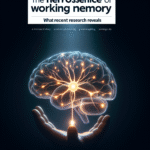
Introduction
Every day, countless individuals wake up to face a society that has woven invisibly oppressive chains around them—an experience of systemic discrimination that confines and restricts. Invisible Chains: The Impact of Systemic Discrimination on Marginalized Communities is a pressing issue that spans race, gender, socioeconomic status, and more. While these chains might not be visible to the naked eye, their effects are palpable and widespread, creating barriers to opportunity, equality, and social mobility.
This article aims to dissect the complex, often hidden structures of systemic discrimination, revealing how they operate and the profound implications on marginalized communities. We’ll explore case studies, statistics, and the lived experiences of those affected, all while offering insights into actionable steps that can foster positive change.
Defining Systemic Discrimination
What is Systemic Discrimination?
Systemic discrimination refers to entrenched policies, practices, and cultural norms that disadvantage certain groups while benefiting others. This form of discrimination is not always overt; it often exists within the fabric of society, ingrained in institutions such as education, healthcare, and the criminal justice system.
Types of Systemic Discrimination
- Racial Discrimination: Historical and contemporary practices that disadvantage people of color.
- Gender Discrimination: Systematic biases against individuals based on their gender, particularly women and non-binary individuals.
- Economic Discrimination: Inequitable access to resources, jobs, and advancement opportunities based on socioeconomic status.
- Disability Discrimination: Societal barriers that marginalize individuals with disabilities, obstructing their full participation in life.
Case Study: Racial Discrimination in the Criminal Justice System
The Invisible Chains: The Impact of Systemic Discrimination on Marginalized Communities is starkly evident in the criminal justice system. Research shows that Black Americans are disproportionately targeted and incarcerated compared to their white counterparts.
Key Statistics:
| Indicator | Black Americans | White Americans |
|---|---|---|
| Incarceration Rate | 1 in 3 | 1 in 6 |
| Length of Sentences | Longer by 20% | N/A |
| Arrest for Drug Offenses | 3.6 times more likely | 1x |
These figures illustrate a grim reality: systemic racism operates at multiple levels—police procedures, sentencing disparities, and beyond. The social ramifications are staggering, as entire communities are disenfranchised and burdened by the fallout of these discriminatory practices.
Analysis of the Case Study
The racial disparities within the criminal justice system serve as a vivid example of how invisible chains constrict marginalized communities. The consequences ripple through families, limiting economic stability, access to education, and overall community trust in societal systems.
Economic Impact: A Cycle of Disparity
Barriers to Employment
The effects of systemic discrimination extend to the job market, where individuals from marginalized communities face additional hurdles, often starting from a place of disadvantage. Studies indicate that job applicants with "ethnic-sounding" names are less likely to receive callbacks compared to those with Anglo-sounding names, even when qualifications are identical.
Table: Employment Rates by Racial Background
| Ethnic Group | Employment Rate (%) |
|---|---|
| White Americans | 75 |
| Black Americans | 56 |
| Hispanic Americans | 60 |
| Asian Americans | 72 |
The statistics reveal a stark reality: individuals from marginalized communities often fight an uphill battle for economic stability due to deeply entrenched biases.
Case Study: The Wage Gap
The wage gap is another critical aspect of economic discrimination. For example, Black women earn roughly 63 cents for every dollar earned by white men. This discrepancy further entrenches cycles of poverty and marginalization, exemplifying the invisible chains affecting socioeconomic mobility.
Analysis of Economic Disparity
The economic barriers imposed by systemic discrimination create a vicious cycle. Limited access to well-paying jobs leads to lower educational attainment and increased reliance on social services—widening the gap between marginalized communities and the privilege of economic security.
Health Disparities: A Crippling Reality
Access to Healthcare
Another significant area affected by systemic discrimination is public health. Marginalized communities often have limited access to healthcare services, leading to poorer health outcomes and reduced life expectancy.
Data Breakdown: Health Outcomes by Race
| Health Indicator | Black Americans | White Americans |
|---|---|---|
| Infant Mortality Rate | 11.4 per 1,000 | 4.6 per 1,000 |
| Diabetes Prevalence (%) | 14.7 | 7.5 |
| Mental Health Treatment Gap (%) | 28 | 12 |
Case Study: The Flint Water Crisis
The Flint water crisis serves as an alarming example of how systemic discrimination can lead to disastrous health outcomes. Predominantly affecting a low-income, Black population, the crisis highlighted the negligence and inequitable treatment faced by marginalized communities.
Analysis of Health Disparities
The Flint water crisis underscores the dire implications of systemic discrimination in public health. This disaster did not merely stem from a contaminated water supply but from deeper governance structures that ignored the needs of marginalized populations.
Education: Barriers to Equal Opportunity
The School-to-Prison Pipeline
The educational system plays an essential role in shaping future opportunities, yet systemic discrimination often leads to a school-to-prison pipeline, particularly for Black and Latino youth. Harsh disciplinary measures disproportionately affect these students, pushing them out of the educational system.
Data Overview: Discipline in Schools
| Demographic | Expulsion Rate (%) | Suspension Rate (%) |
|---|---|---|
| Black Students | 16.8 | 40 |
| White Students | 4.0 | 20 |
Case Study: Restorative Justice Programs
Some schools are starting to implement restorative justice programs to mitigate the effects of discriminatory disciplinary practices. These programs focus on dialogue and reconciliation rather than punishment.
Analysis of Educational Disparities
Educational barriers perpetuate cycles of poverty and limit opportunities for upward mobility. The invisible chains that dictate the educational landscape often trap marginalized youth in a web of failure before they even enter adulthood.
Breaking Free: Strategies for Change
Advocacy and Policy Reform
To dismantle invisible chains, robust advocacy and policy reform are essential. It’s critical to involve grassroots organizations and community leaders who understand the local context and can drive meaningful change.
Coalition Building
Building coalitions among diverse groups can amplify voices and create a broader impact. By uniting various marginalized communities, we can advocate for systemic change more effectively.
Education and Awareness Campaigns
Raising awareness about systemic discrimination can shift public perception and foster allyship. Effective education and activism fuel societal change, challenging entrenched biases.
Conclusion
The invisible chains of systemic discrimination have far-reaching consequences that touch every aspect of life for marginalized communities. By understanding the structures that perpetuate inequality, we can begin to dismantle these chains and foster a more equitable society.
Action starts with awareness—after reading this article, consider how you can contribute to the dismantling of these barriers in your community. Every voice and action counts in the fight for justice and equality.
FAQs
1. What is systemic discrimination?
Answer: Systemic discrimination refers to ingrained policies, practices, and cultural norms that disadvantage certain groups while favoring others, often manifesting in areas like education, healthcare, and employment.
2. How does systemic discrimination affect marginalized communities?
Answer: It creates barriers to opportunity, economic mobility, and equitable treatment in various societal institutions, leading to persistent inequalities.
3. What can individuals do to combat systemic discrimination?
Answer: Advocacy, education, and supporting policies that promote equity are crucial steps individuals can take to challenge systemic discrimination.
4. Is systemic discrimination purely a racial issue?
Answer: No, while often associated with race, systemic discrimination can affect various marginalized groups, including women, the disabled, and economically disadvantaged individuals.
5. How can data help understand systemic discrimination?
Answer: Data provides measurable insights into disparities across different social indicators, highlighting the pervasive nature of systemic discrimination and the need for reform.
By garnering awareness and instigating change, we have the power to liberate ourselves and our communities from the Invisible Chains: The Impact of Systemic Discrimination on Marginalized Communities.

















